UV lamps for the pool: purpose and application
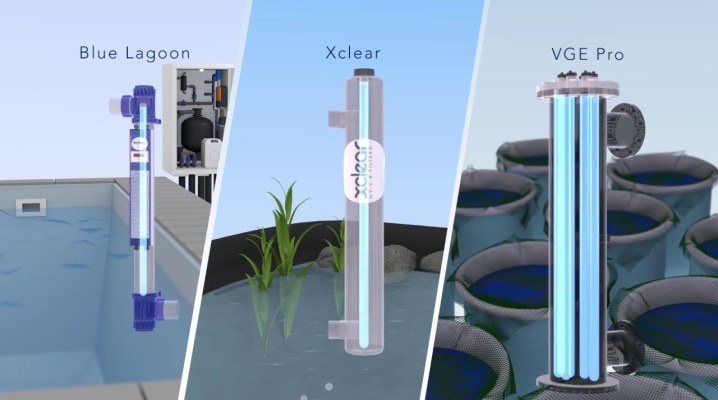
UV lamps for the pool are considered one of the most modern means of water disinfection. The pros and cons of a UV installation convincingly prove the feasibility of its use. Here are just what you should pay attention to when choosing surface and submersible germicidal lamps for cleaning the pool - this issue should be dealt with before making the final purchase decision.
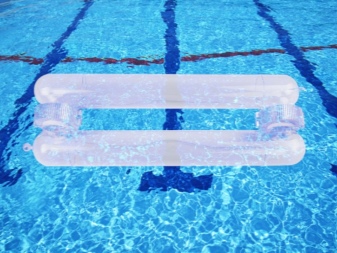
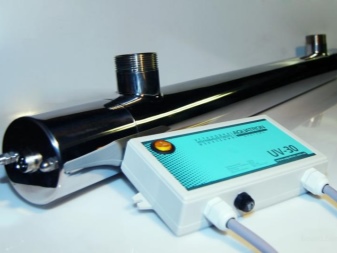
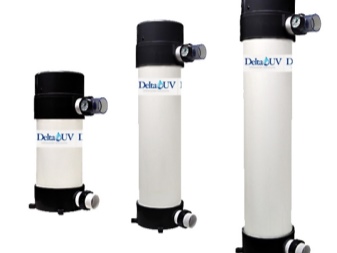
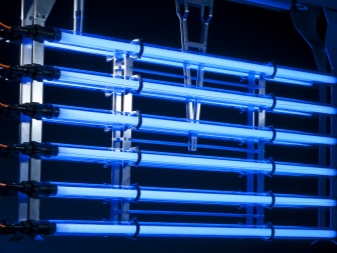
Appointment
UV lamps for the pool are disinfection equipment used directly in the complex of treatment facilities. They are installed in such a way that, when the liquid enters the bowl, all the necessary water treatment takes place. UV units are rarely seen as primary equipment in large indoor pools, but they are quite effective in small indoor baths. As part of a water disinfection complex, lamps can be used as an element of additional purification, allowing to reduce the dosage of chlorine and other hazardous compounds.
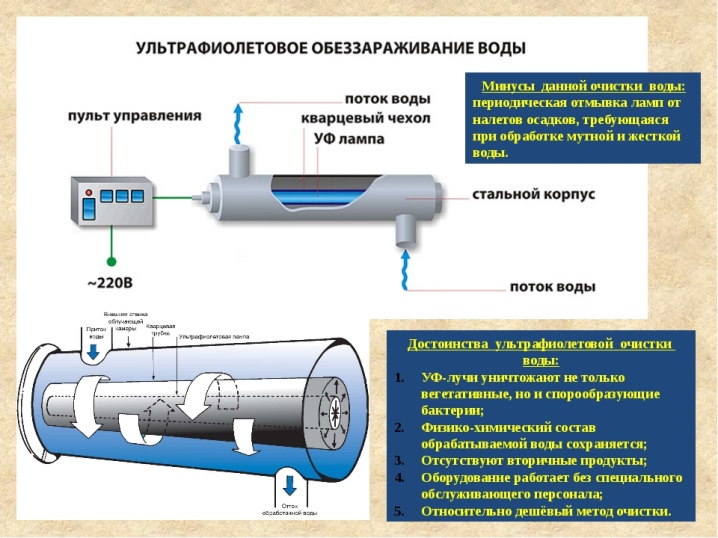
UV installations are economical and efficient, they require less maintenance costs, and such equipment needs to be replaced quite rarely.
It is important to understand that this method of cleaning does not fundamentally solve the problem of pool pollution.
With its help, it is possible to significantly reduce the volume of used chemical disinfectants of the environment and reduce the total volume of accumulating microorganisms. Besides, in the absence of flow treatment, the effect will be local.

In combinations of disinfection systems with chlorine and UV, permitted by GOST, ultraviolet light is responsible for instant disinfection of the aquatic environment. Chlorination preserves this effect, helping to make it prolonged. It is not worth relying on the UV lamp to cope with the removal of microflora from an already polluted pool.
Species overview
The pool UV lamp can be used as a primary or auxiliary water treatment. As in the case of lighting fixtures used in fixed-type baths, these products can be roughly divided into above-water and underwater ones. But the purpose of the UV lamp will not be the illumination of the aquatic environment at all - at the moment it is turned on and throughout its use, there should be no people in the container. The disinfecting effect is achieved through the use of short-wave radiation, from which most of the microorganisms die.
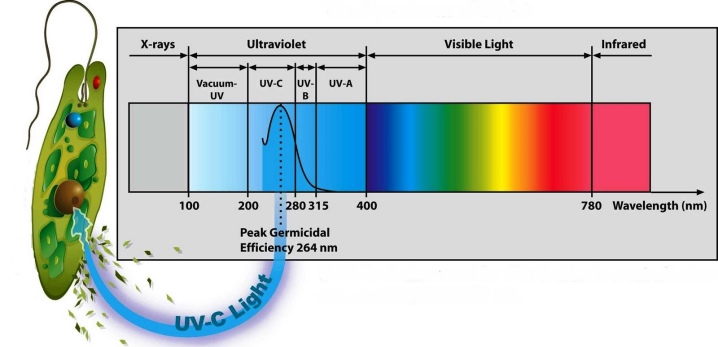
Surface
Inexperienced pool owners often confuse an LED lamp with a UV installation. In fact, the first type of equipment is really above water, but it serves exclusively as a light source, located in the pool above the water surface at a safe distance. Out-of-water UV treatment equipment is more like a complete reservoir built into a filtration system. Passing through it, the water undergoes the necessary disinfection, and then it enters the heater.
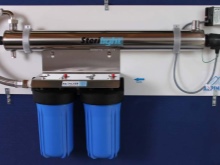
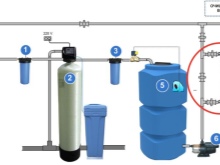
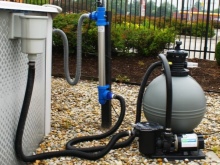
Underwater
Underwater types include submersible germicidal lamps. Their power is noticeably lower, and the device itself is placed in a special case that is not subject to destruction under the influence of mechanical factors and is completely sealed. Such a UV sterilizer is located along the walls of the pool, turns on for a while while there are no people in it. The disinfectant works as efficiently as possible in clear, clean water, helping to maintain its original properties for longer.
It is worth considering that underwater UV lamps are well suited for seasonal pools, as they allow the use of submerged treatment at night. They are suitable for combination with frame structures and are significantly cheaper than surface models.
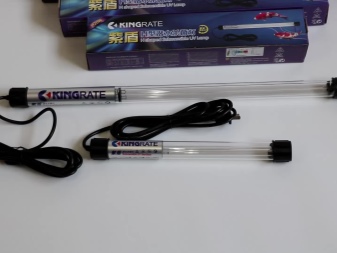
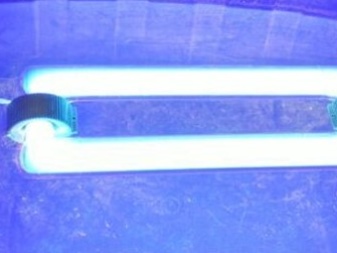
Due to the limitation on the UV wavelength, it is worth using submersible models in combination with other types of equipment - for example, a circulation pump, placing the disinfectant directly in the flow path. In this case the work of the ultraviolet lamp will be more efficient.
Selection Tips
When choosing means for ultraviolet disinfection of the pool, you should pay attention to a number of parameters, which may be fundamental.
- Construction type. A direct radiator built into the filtration system should definitely be used in swimming pools where chlorination and the addition of chemical reagents already exist. Such a measure will help ensure an effective fight against microorganisms that have already acquired resistance to other cleaning methods, and will destroy the source of the unpleasant odor - chloramines. In pools of non-permanent use with a rigid frame, it is acceptable to use submersible lamps, which are simpler and more convenient to use.
- Power. On average, a 2.5 W lamp is enough for 1 m3. The greater the displacement of the pool, the more powerful the emitters should be. When choosing the optimal indicator for submersible equipment, it is better to start with 1/2 of the maximum power, if necessary, later add 1 more emitter.
- Bandwidth. Determines how much water can be disinfected in 1 hour. For professional flow-through installations, this figure is 400 m3 / hour, for household installations, 70 m3 / hour is enough.
- Lamp working life. How long the UV equipment will last depends on it.
- Voltage type. It is advisable to choose an option that does not require additional investments and costs.
- Price. The cheapest built-in UV emitters cost from 200-300,000 rubles or more. A submersible lamp for a small pool can be found in the price range up to 20,000 rubles.
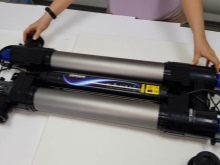
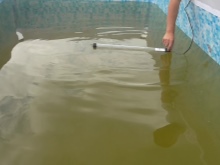
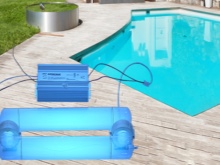
All these factors must be taken into account when choosing equipment for ultraviolet cleaning. In any case, it is worth remembering about the advisability of such an acquisition.
Installation features
Installation of an installation with an ultraviolet cleaning system has its own characteristics. This element of the system is installed last, before the heating element and after the main filter. Before that, the water must undergo coarse cleaning and chlorination. This approach is fully justified. All dirt and debris particles are retained before the water enters the UV unit and do not harm it.
By passing through ultraviolet radiation, the liquid gets rid of bacteria and other pathogenic microorganisms. The water then enters the heater and the pool bowl.
When using immersion elements, ensure their daily use. In this case, it is recommended to combine them with the night operation of the built-in unit.
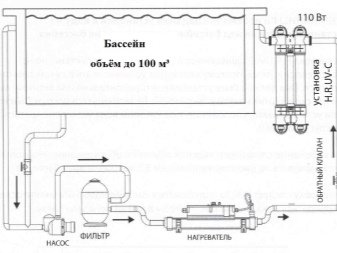

Submersible lamps in a special sealed casing are designed for use in private pools with low-throughput filtration systems. It is enough to simply place them in an aqueous medium in an amount corresponding to the volume of water. The resource of such a disinfectant is enough for 10,000 hours, a durable metal case made of stainless steel is resistant to corrosion and does not react with chemicals.
For pool cleaning with an ultraviolet lamp, see below.



































































The comment was sent successfully.